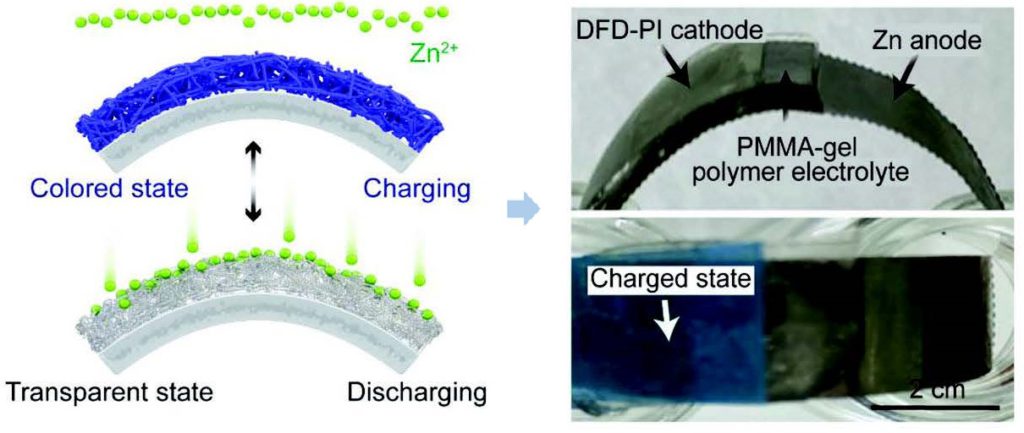Smart, highly efficient zinc-ion battery shows unique colour-changing properties

Researchers at the Korea Advanced Institute of Science & Technology and Myongji University developed a smart zinc-ion battery that, by changing colours, can visually represent its charging and discharging processes.
Besides providing visual clues about their charge, batteries with electrochromic properties can be used as display devices that cut down energy consumption for indoor cooling by controlling solar absorbance.
In a paper published in the journal Advanced Materials, the scientists explain that the device they have created has an electrochromic polymer anode incorporated with a “π-bridge spacer”, which increases electron and ion mobility efficiency.
So far, electrochromic batteries have shown low electrical conductivity, leading to low efficiency in electron and ion mobility, and low storage capacities. Incorporating such batteries in flexible and wearable devices has, therefore, proven challeging.

To maximize the efficiency of electron and ion mobility, the Korean research team modelled and synthesized the first π-bridge spacer-incorporated polymer anode in the world. π-bonds can improve the mobility of electrons within a structure to speed up ion movement and maximize ion adsorption efficiency, which improves energy storage capacity.
In anode-based batteries with a π-bridge spacer, the spacer provides room for quicker ion movement. This allows fast charging and an improved zinc-ion discharging capacity of 110 mAh/g, which is 40% greater than previously reported. It also allows for a 30% increase in electrochromic function that switches from dark blue to transparent when the device is charged/discharged.
In addition to this, the researchers report that should the transparent flexible battery technology be applied to smart windows, they would display darker colours during the day while they absorb solar energy, and function as a futuristic energy storage technique that can block out UV radiation and replace curtains.
“This technique goes beyond the existing concept of batteries that are used simply as energy storage devices, and we expect this technology to be used as a futuristic energy storage system that accelerates innovation in smart batteries and wearable technologies,” Il-Doo Kim, corresponding author of the paper, said in a media statement.
More News
{{ commodity.name }}
{{ post.title }}
{{ post.date }}



Comments